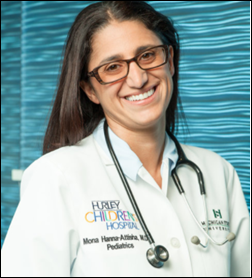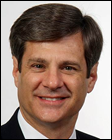Cary Breese is co-founder and CEO NowRx of Mountain View, CA.

Tell me about yourself and the company.
I’ve done a few startups in my life, insurance and database. I’ve always had an automation focus, using technology to automate things in legacy industries.
I started NowRx in 2016 with an idea of making the pharmacy experience better. The real question that always intrigued us when we thought of the idea was, how do you make it profitable? That’s where the technology comes into play. We believe that if you can focus and optimize all the operations, software, robotics, and logistics, you can create a profitable model that’s a full replacement for a Walgreens and CVS experience. That has been the goal, and we think we have created it. We have since expanded from the Bay Area into Orange County, south of LA, and Phoenix, Arizona.
How do you think chain drugstores have failed to meet consumer needs?
The dirty little secret in the retail pharmacy world — and I think there’s enough evidence there – is that they want consumers to continue to come into their stores. That has been their model for decades. That creates a disincentive with where consumers are moving. They are looking for more and more convenience. I can get a car to come pick me up in two minutes and take me wherever I want. I can get my groceries delivered. I can get my lunch delivered. But the retail pharmacies don’t like that model. They want to have you come into a store for an in-store pickup.
They keep the pharmacy operation itself in the back of the store. They fill 15,000 square feet of space with all other products under the sun, and that’s where the majority of their profits come from. There’s a misaligned incentive. It has been exacerbated even more during COVID, where customers and patients are realizing there’s got to be a better way than going to stand in line for essentially a commodity product at a crowded store and risk exposure to COVID.
We work with some hospitals as well. Since we’re delivering prescriptions all day long anyway, we deliver right to patients on the day of the discharge.They get all their outpatient medication delivered to their room before they go home. We can reduce readmissions and hospitalizations. We think we’ve moved the needle on medication adherence and better patient outcomes through better prescription management. People are less inclined to not take their medications because they didn’t go to the pharmacy, they were too busy, they didn’t have time. Maybe they lack access to transportation. Maybe they just forgot. We resolve all of those issues right out of the gate. Plus we have some patient analytics that we’re layering on top of that as well to do pharmacy-based interventions to target chronically ill patients and try to make a more convenient and more reliable refill and just medication-adherence procedures.
Walgreens and CVS deliver through third-party services, and mail order pharmacies, including Amazon’s PillPack, deliver to the patient’s door. Why is it an improvement to have a physical, licensed pharmacy doing its own delivery?
Mail delivery pharmacy has been around for decades. We’re not too interested in that space. We think that works well for certain patients. Chronic meds are not urgent, and the 90-day fill can be a convenience.
But if you notice, mail delivery has been around for 20 years, as in Express Scripts and Caremark, but it hasn’t made a huge dent in retail pharmacy. Retail pharmacy is still the preferred model for many customers, particularly for medications that don’t necessarily fit a mail order delivery, like antibiotics that you need today, pain medications, or when your doctor changes the medication dosage and you need to get it refilled. All of those needs exist today and are a big pain point for customers. We believe that the right model is neither retail, which requires a patient to come into a store, or mail delivery. We see there’s a optimal model in between those two that picks the best of both worlds.
We use DEA-licensed pharmacy facilities. We call them micro fulfillment facilities. They are like the operation of the pharmacy inside Walgreens or CVS, but just the pharmacy part in the back. We take that out and put in a warehouse. We put it local to customers in their communities, within 10 or 15 miles of any patient that we serve. We do all the same things that a full-service pharmacy would do. We have pharmacist consultations over the phone, text, or video chat. We have technicians. We have our own inventory in those micro fulfillment centers. Everything is delivered right to the patient same day.
For a patient, they get the same-day service they would get from a regular pharmacy. We can do all the chronic meds and refills that a normal mail order pharmacy would do as well. We can do all of that and bring it right to your house, free of charge. You just pay your normal co-pay.
Inside the pharmacy, we take the best out of the mail-order pharmacies — the technology, the automation, the robotics, and all of that streamlined software. We built our own pharmacy management systems. We’ve been awarded the White Coat Award by Surescripts as one of the most accurate pharmacy management systems in the industry. Through that automation and our logistics, we believe that we can build a better solution for patients, taking the best of the other two models that are available.
How is chain drug store technology inadequate and how have you improved it?
I’d like to say that there’s more to fixing retail pharmacy than just adding delivery. That’s one of the problems we see, which is adding a third-party delivery service. You mentioned using Instacart or some other third-party delivery company. It doesn’t really fix the bottlenecks that are inside retail pharmacy, which we think are the key.
You have someone counting out pills, typically manually in a CVS or Walgreens. You also typically have a fairly antiquated software system that gets errors from insurance companies. Patients usually have to stand on line. There’s someone behind the counter on the phone waiting for 20 minutes to talk to the insurance company about how to resolve the claim. You can manage all of that with software.
Our software also connects with physician offices electronically. We have two-way communication. We get electronic prescriptions in, but we can also coordinate refill orders going back out. We also coordinate with the insurance companies. Then we have our own logistics.
Fixing those bottlenecks can make this a much more efficient process. The mail order pharmacies are super high volume. They have far less labor costs per prescription because they’ve been able to automate. You don’t see that kind of automation in a CVS or Walgreens, so they don’t have enough money to spend on good customer service. They’re spending it all on all those manual processes and bottlenecks. That’s how we think we can fix the industry.
I assume that you would like NowRx to be valued as a technology company, but even with a closed-door pharmacy in individual communities, you still have to get a state license and hire pharmacists. How can you scale given the limitation of opening up individual, almost neighborhood-level pharmacies?
The key is the “almost.” It’s almost neighborhood-level, but it’s actually quite a much smaller footprint than a CVS or Walgreens that are, let’s face it, just about every two or three miles. I think Walgreens claims to be within five miles of every man, woman, and child in the US.
We have far, far lower footprints than that. We have about one-twentieth of the required footprint compared to a CVS or Walgreens. We cover a much bigger territory per one of our micro fulfillment centers. A 15-mile radius is about 10 or 12 times the radius of a typical CVS, which only draws about a mile and a half or two mile radius. Each of our locations is a third the size. We don’t need 15,000 square feet of retail space, we need about 5,000 square feet. We don’t pay as much per square foot. We pay about a third the cost per square foot because we’re in commercial space, not retail.
Add that all up — about one-twentieth the number of locations and each one is one-third the size and one-third the price – and you’re getting pretty close to 1% of the fixed overhead that the big guys play. That’s additional savings for us that drops rates to the bottom line.
I assume that the chains stuff their stores between the front door and the prescription counter with all those products because the margin on them is high. Can you make enough money from just selling prescriptions?
They do have more margin on those products. A typical CVS makes about 60% of their profit from the front of the store, but they’re paying a big cost for that. The fixed overhead is very costly in the retail setting to have all of that product. That’s why they want people in the store. That’s why their whole model is there. They have that retail space. It’s an upsell model. They want the impulse buys. They put the pharmacy in back to try to attract customers.
We sell a list of about 250 non-prescription related items. It’s much easier for me to warehouse that product. I don’t need fancy retail shelving. I can just stack it in my warehouse. We get the customer the same convenience they would have by having additional add-on items like vitamins, probiotics, cough remedies, or pain remedies, whatever they would need to add on to their pharmacies. We don’t add so many products like back-to-school supplies or beauty aids, or I even saw tennis balls at my local CVS. We don’t go down that path. But vitamins, pain relievers, cough remedies, and things like that, we do offer today. It is a higher profit margin business, and it’s very easy for us to keep in the warehouse and add into a bag that’s heading out for delivery.
Telehealth has a last-mile problem where the online visit still requires a trip to the drugstore or lab. Can that be improved?
I couldn’t agree with you more. We’ve always been big believers in telehealth. The stat I like to use is that 70% of physician appointments result in or involve a prescription medication. You are exactly right — it’s kind of ridiculous to expect a patient to have an online meeting with their physician and then be expected to get out of their pajamas and go down to CVS. We think we’re a critical component to the telehealth movement, which will is going more and more mainstream now because of COVID. We are really excited about that.
In fact, we have some additional technology offerings that are going to dovetail right in with the telehealth platform, including feedback to physicians in a portal that gives them real-time updates on the prescriptions and if they have been delivered. Did they hit the insurance plan, or does it hit a prior authorization? Do we need to do an alternate prescription? We coordinate with that physician. Then you start to have a powerful combination of collaboration between the physician, patient, and pharmacy to drive better care.
I think of all these third-party delivery services driving around to individual houses bringing groceries, takeout food, and prescriptions. An individual business, like a restaurant, might work with several of those services. There seems to be a lot of inefficiency in making multiple trips to the same front doors. Could there be a point where someone creates a Post Office-like network that does white-label delivery from any company that wants to hire them as a courier?
It’s theoretically possible, but pharmacy is so complex. There are regulatory concerns. There are patient privacy concerns.
We always felt like from the very beginning – and we’ve been even more strong in our beliefs as we’ve moved along the last few years — that the best way for this industry to provide this kind of customer experience where you’re fully remote and everything is delivered is to own the delivery stack yourself. You have your own employees of the pharmacy that are the drivers. We can background check them. We can drug test them. We check their driving. They’re branded NowRx. They wear the NowRx shirts. They are in branded cars.
The patients get a level of comfort seeing the drivers pull up. Many of these patients that are on recurring medications see the same driver month-in and month-out. They’re on the same routes. There’s no privacy issues as far as coordinating refills and who owns the patient file that you would run into with a third-party delivery service. We handle narcotics, so we deliver all kinds of medications, including Schedule II narcotics. That’s very difficult to do if you’re a third-party delivery company and trying to make that work. We’ve always come down on the side of, let’s make the best customer experience that we possibly can, make it as seamless as possible, and make it as a complete of a service as we can. To do that, you’ve got to own your own drivers.
Chain drugstores have tried multiple concepts to get more sales per square foot out of their physical footprint, sometimes launching their own services and sometimes contracting them out, such as with urgent care and lab access centers. How will that play out over the next few years?
Our original hypothesis about this space is right. The big chains are going to keep doubling down and try to make a retail model work. They have too much invested in all that retail space.
You look at the recent announcement about a month ago. Walgreens acquired a company called VillageMD, which adds clinic services inside the retail stores. Exactly what you’re saying. That confirms my hypothesis that they are going to continue to double down. They are adding reasons to bring customers into a store, and customers are looking for fewer reasons to go into the store, so there’s a misalignment there.
In four or five years, you’re going to continue to see displacement of customers out of the retail, traditional brick-and-mortar model into these other modes. At some point, there is going to be a significant disruption. You touched on Amazon earlier — they might be a trigger point if they try to make a move. Right now, they’re doing mail order, but at some point, they’re going to try to move to a two-day delivery for pharmacy or maybe even a one-day delivery. That will put so much heat on the retail pharmacies that they will have to have a real heart-to-heart meeting with themselves to figure out how they can change their model to survive.
Frankly, I don’t think the existing retail model will survive more than four or five years. I think consumers are going to pull away from the retail model. They want free, same-day and even same-hour delivery, and that’s where we’re going to end up.













































I can't get past the helmets and safety vests. On everyone. Including the model patient. What, are they expecting the…